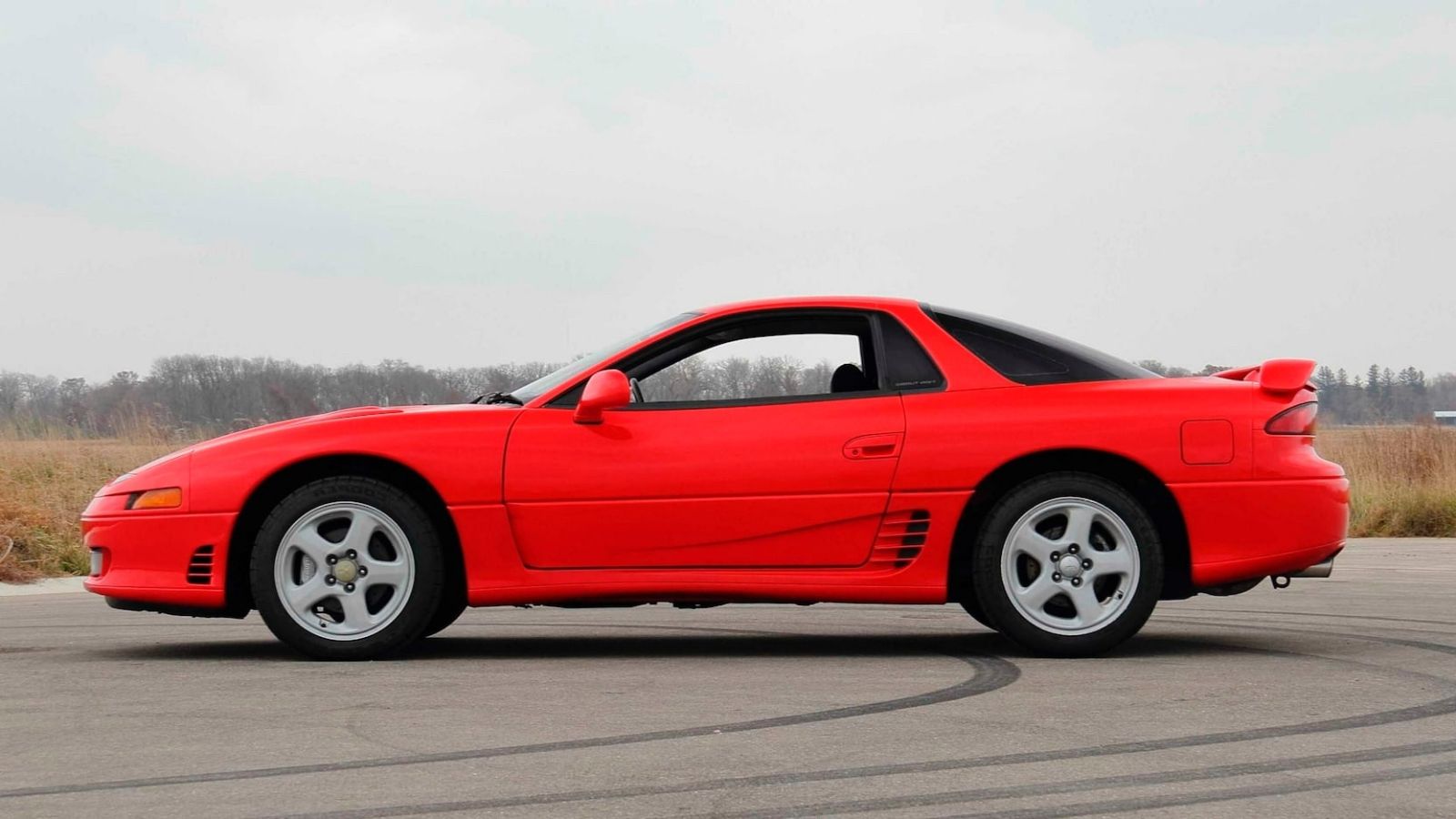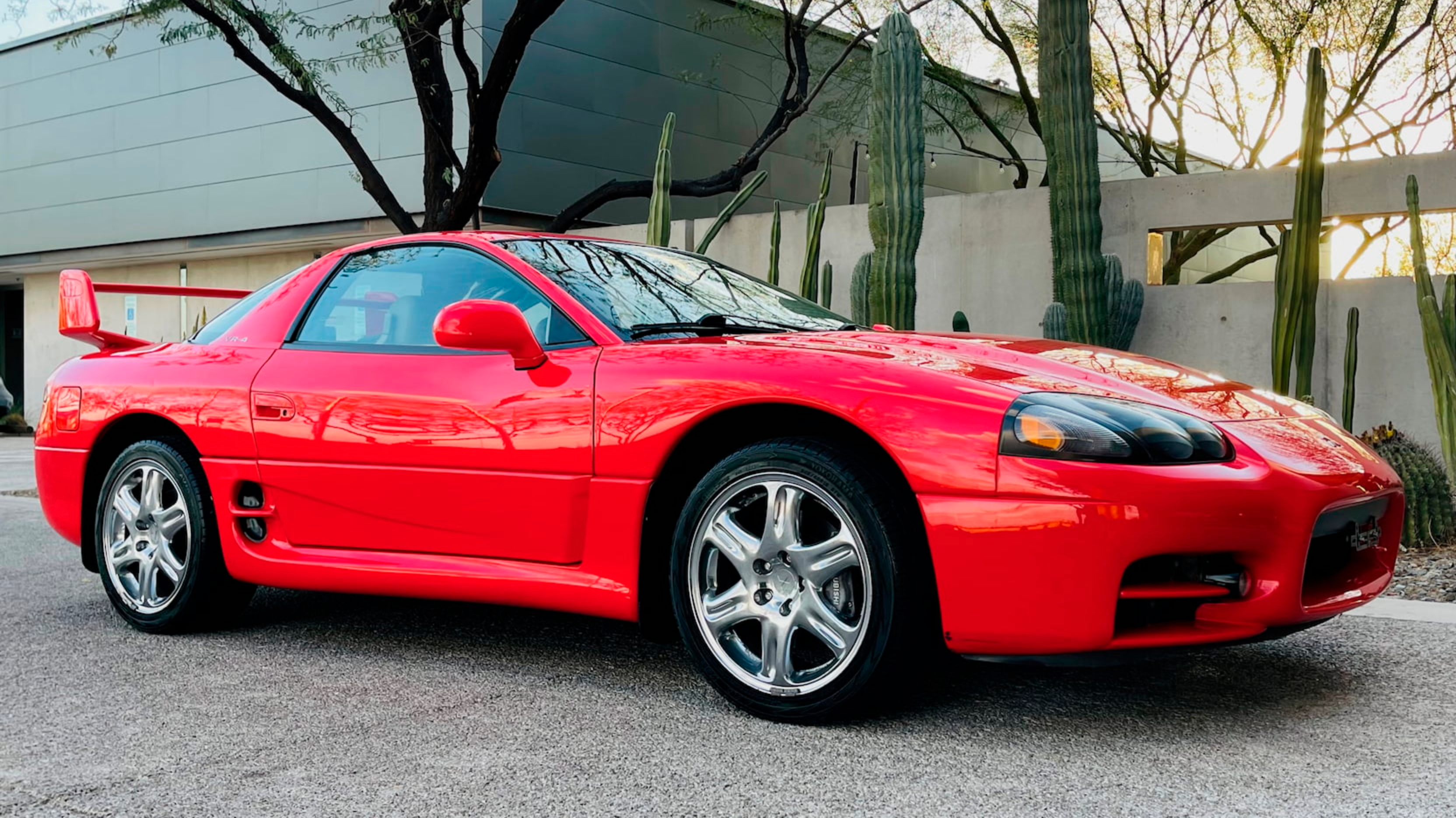The 1990s were some of the best automotive years to ever pass by. The world received cars it will never receive again, and those cars were created through fierce competition between Japanese brands. Toyota made the Supra, Nissan the Skyline GTR, Honda the NSX, and Mazda the RX7. However, there is one car the world often forgets about, and that car comes from Mitsubishi. The 3000GT VR4 matched the competition in almost every aspect, yet it is the forgotten beast of Japanese automotive history.
But why did the VR4 not reach the heights of the competition? Why, in a world where 1990s Japanese sports cars are extremely expensive, the 3000GT VR4 is still one of the cheapest ones to buy? Let’s have a look at the story of the Mitsubishi 3000GT VR4.
What Was The 3000GT VR4?
The Mitsubishi 3000GT VR4 was a front-engined all-wheel-drive grand touring sports car that the Japanese brand made from 1990 to 2000 through three generations. Manufacturing took place in Nagoya Japan where the car was also known as the GTO. Interestingly, in America, the 3000GT was also sold as the Dodge Stealth between 1991 and 1996. As the name suggests, under the hood of the vehicle was a 3.0 liter 24 valve V-6 that was transversely mounted. Model options varied between naturally aspirated ones or twin-turbo units. Of course, the twin-turbo engines are the most desirable.
Even more impressively, the 3000GT had full-time AWD and even adaptive suspension. Remember, this car is now 30 years old, and it has technology that is still relevant today. A VR4 Spider was also in production between 1994 to 1995. The cars produced during this time were some of the first fully automated and fully retractable hardtops since the 1959 Ford Skyliner.
The 3000GT VR4 In A Few Words
- Competition: The 3000GT VR4 was a contemporary of the Toyota Supra, Nissan Skyline GTR, Honda NSX, and Mazda RX7, yet it is often overshadowed in the Japanese sports car industry.
- Technology: Despite its age, the car featured advanced technology such as adaptive suspension and active aerodynamics, characteristics that remain relevant today.
- Design: The vehicle began with a distinct, angular design, synonymous with 1990s Japanese sports cars, but eventually transitioned to a rounder aesthetic, which was less favored by enthusiasts.
- Transmission: Offered with a five-speed manual transmission as standard, which was preferred over the available four-speed automatic due to the slow response of automatics during that period.
- Performance: Initially boasting impressive performance stats with power outputs ranging from 164 to 320 horsepower, it couldn't sustain the momentum in the modification sector, limiting its potential compared to other JDM heroes.
- Market Perception: The 3000GT VR4 could not command the same market appeal and value appreciation as other Japanese sports cars, largely due to its complex maintenance requirements and limited scope for aftermarket enhancements.
- Durability Issues: Despite its innovative features, the vehicle's drivetrain was not as adaptable to power modifications as that of competitors, which hindered its reputation and preference among enthusiasts.
- Maintenance: The car's advanced technologies, though pioneering, became a drawback as they were difficult and expensive to repair, deterring potential buyers.
- Legacy: Despite its underappreciated status, the 3000GT VR4 remains a testament to Mitsubishi's technological innovation and contribution to the 1990s Japanese automotive landscape.
The Powertrains Offered In The 3000GT
In North America, all models of the 3000GT and Dodge Stealth had the 6G72 3.0 liter V-6 under the hood. However, depending on the trim level of your choice, the V-6 was either a single overhead cam, a double overhead cam, or a twin-turbo double overhead cam. Power figures for each of these engines pack 164, 222, and 300 horsepower, respectively.
In the transmission department, buyers could choose between a five-speed manual that came as standard or a four-speed automatic. The automatic was available in all models except the turbocharged models. Of course, automatics back then were slow; therefore, the manual was a much more desirable option.
The 3000GT VR4 Screams 1990s Japan
The first generation of the 3000GT has a rather boxy look and pop-up headlights. Of course, this was a staple of 1990s Japanese vehicles, as many of them used nostalgic pop-ups. The general shape of the vehicle also looks very Japanese, reminding us of the Mazda RX7 of the time. Of course, as the years progressed and regulations changed, the 3000GT slowly moved away from the pop-up headlights and received projector beam headlights that were fixed to the body.
Also, the second generation of the 3000GT VR4 received even more power thanks to MI-VEC which could regulate timing, pushing power figures to 320 horsepower. Furthermore, the vehicle now came with a six-speed manual transmission which was very impressive during the mid-1990s.
The angular shape of the vehicle slowly became rounder and, according to many, uglier. The budget also decreased as active suspension and active aerodynamics were pulled out of the car in favor of pricing. So, yes, from a certain point on, the 3000GT VR4 gradually got worse.
Why Isn’t The 3000GT VR4 As Loved As Other Japanese Legends?
So, if it is all so impressive with the 3000GT, why doesn't it have the appeal and following of other Japanese vehicles? Well, the answer here is relatively simple. The JDM heroes we love, excel at either handling or all-out speed (in some cases both) The Mazda RX7, for example, was incredibly light and agile but also very fast and tunable. Its drivetrain could take much more power than stock, and its handling became even better with some added modifications.
The Supra had one of the strongest engines and drivetrains ever known in history. There was a 3.0-litre six-cylinder block that could surpass 600 horsepower on stock internals and could go well beyond 1500 with aftermarket ones. Additionally, the Supra could be pushing double the power while keeping its factory transmission and differential without any issues. It was an overbuilt masterpiece with one of the most unique interiors, engines, and designs ever. This, is perhaps why values of the supra never dropped all that much and have now skyrocketed to incredibly expensive levels.
Finally, the Nissan Skyline R34 provided a bit of a middle ground between the RX7 and Supra. It was much heavier than the Mazda but still handled well thanks to its all-wheel-drive system. Also, it responded incredibly well to power modifications and has also become famous in the tuning world.
Specification And Features
Feature/Aspect | Mitsubishi 3000GT VR4 |
Production Years | 1990-2000 |
Generations | Three |
Alternative Names | GTO, Dodge Stealth |
Manufacturing Location | Nagoya, Japan |
Engine | 3.0L 24-valve V-6 |
Power Outputs | 164, 222, 300, and 320 horsepower |
Transmission Options | 5-speed manual, 6-speed manual, 4-speed automatic |
Key Technologies | Four-wheel steering, adaptive suspension, and active aerodynamics |
Noteworthy Variant | VR4 Spider (1994-1995) |
The 3000GT, however, failed to become anything more than it already was. Its drivetrain couldn’t take power mods as it wasn't overbuilt like that of its competition. Furthermore, the four-wheel steering, adaptive suspension, and all-wheel-drive were incredibly advanced and cool for the time but were also a headache to fix if they went wrong. This meant that buyers chose to go for other Japanese performance cars that were competent both on the road and on the racetrack.




